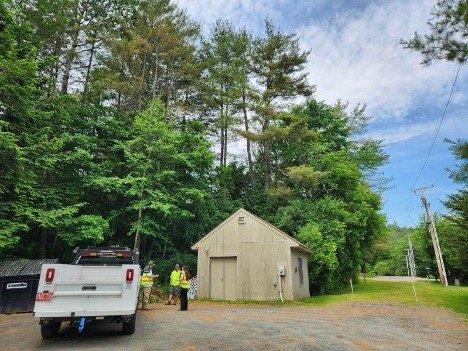Digitizing the Past to Protect the Future: How Hopeworks Helped Hartford, VT Tackle Lead in Drinking Water
By Mary Samar and Erica Galante-Johnson
In May 2024, the town of Hartford, Vermont, set out to complete its lead service lines (LSL) inventory to comply with the EPA’s Lead and Copper Rule Revisions (LCRR). Hartford, like many rural towns, faces the dual challenge of aging infrastructure and limited local resources, making the completion of LSL inventories particularly challenging.
Achieving that milestone took more than just technical expertise—it required innovation, teamwork, and a powerful partnership with EPIC’s Funding Navigator and Hopeworks, a nonprofit organization that trains and empowers young professionals. Hopeworks helped tackle one of the most time-consuming parts of the process: transcribing decades-old, handwritten utility records.
Breathing New Life into Old Data
Home to just over 10,000 residents spread across four villages, the town is served by two public water systems—Hartford Water System and Quechee Central—with about 2,800 total service connections.
In many small towns, historical utility records—when available—are anything but digital. This meant that for Hartford, the initial phase of the LSL inventory relied on accessing critical information buried in old service work orders and legacy documents. That’s where Hopeworks came in.
Working remotely, Hopeworks crews—composed of 3 managers and 9 young adults—digitized historical records by carefully transcribing handwritten service work orders and reviewing service line photos, converting analog data into a raw digital database. Between July and September, the Hopeworks crew digitized 3,606 historical records, an impressive achievement.
This innovative partnership not only advanced the town’s service line inventory efforts, but also supported Hopeworks' mission to create career pathways for young adults through meaningful, real-world experience.
From Raw Data to Ready-to-Submit
Once the raw database was compiled, the EPIC team merged Hopeworks’ data with the water systems’ current billing records, added installation dates, and incorporated findings from prior field inspections. The result: a fully integrated LSL inventory, ready to submit to the state’s Department of Environmental Conservation (DEC). In this initial inventory:
Service line material type identified: 1,164
Lead lines identified: 0
Galvanized lines requiring replacement identified: 61
Remaining unknowns: 1,607
EPIC then served as the main liaison with Vermont DEC, navigating four rounds of revisions to the submitted inventories before receiving final approval in March 2025. Alongside the technical work, EPIC led community engagement efforts, developing flyers, a lead awareness webpage, and direct mailers to inform and involve residents. DEC-approved customer notification letters were also distributed.
Turning Compliance into Opportunity: A Model for Community Wins
Hartford’s approach to tackling its LSL inventory offers more than just a blueprint for regulatory compliance—it’s a model for how communities can turn infrastructure mandates into broader opportunities for impact.
Through its innovative collaboration with Hopeworks, the town not only helped identify nearly half of the system’s service lines, but also helped create valuable job experience for young professionals hundreds of miles away in Philadelphia and Camden. This win-win dynamic transformed a federally required task into a vehicle for workforce development and economic opportunity.
Thanks to this forward-thinking collaboration, Hartford now has a Vermont DEC-approved, actionable roadmap to eliminate galvanized lines requiring replacement from its water system, and sets an example for other towns facing similar inventory challenges.
Above: Public works staff lead a tour of a groundwater pump station in Hartford, Vermont.
Above: Dam on the Ottauquechee river near Hartford, Vermont.



